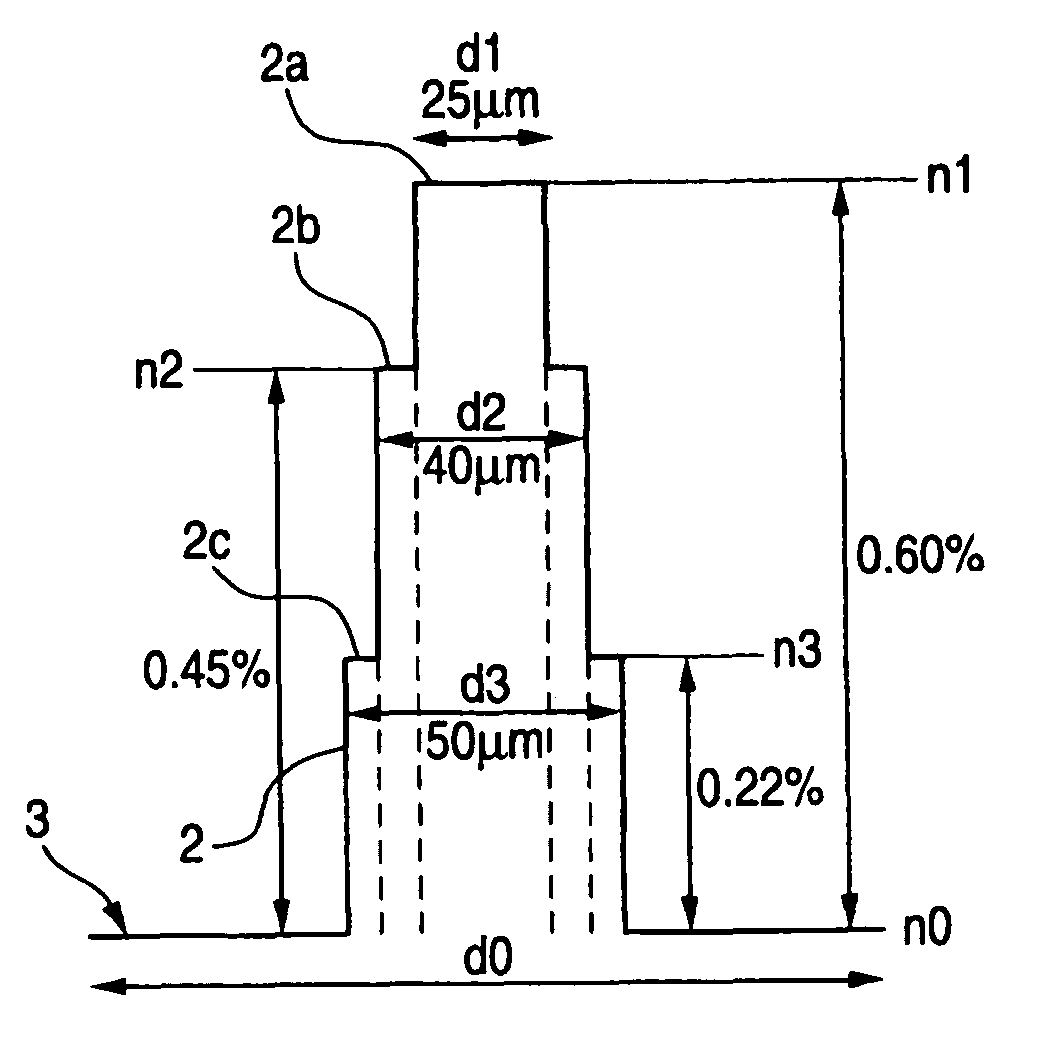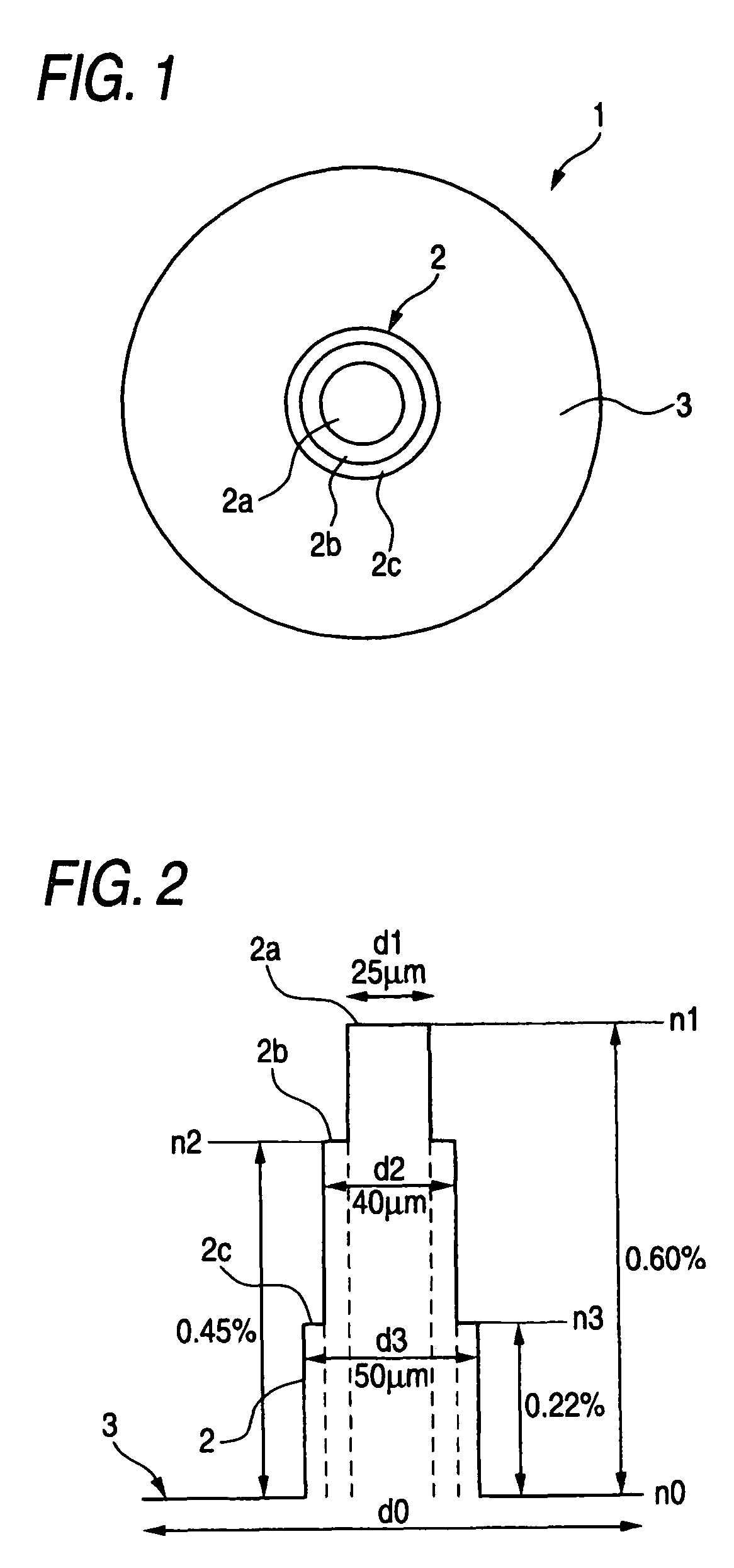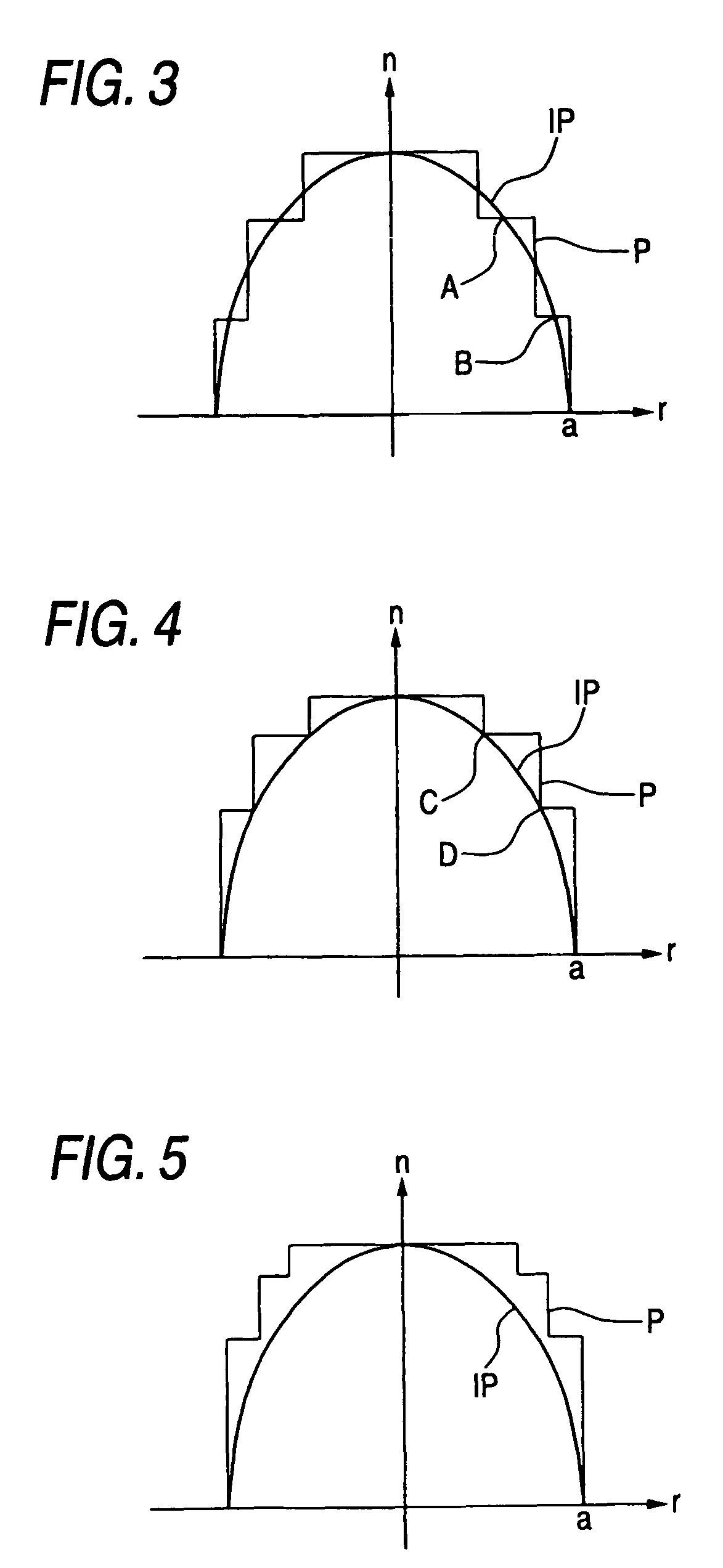Multimode optical fiber
a multi-mode optical fiber and optical fiber technology, applied in the field of multi-mode optical fiber, can solve the problems of inability to prevent hydrogen entry, inability to carry out high-quality measurement, and inability to detect temperature dts accuracy deterioration, so as to achieve easy production and increase the effect of attenuation
- Summary
- Abstract
- Description
- Claims
- Application Information
AI Technical Summary
Benefits of technology
Problems solved by technology
Method used
Image
Examples
example 1
[0084]The refractive index profile of the core part of an optical fiber of an example 1 shows that of a three-step type (the number M of layers of the core part=3) as shown in FIG. 7 and a diameter of the core part is 50 μm. A first core layer has a relative refractive index difference Δn1=0.60% relative to a cladding part and a diameter d1=25 μm. A second core layer has a relative refractive index difference Δn2=0.45% relative to the cladding part and a diameter d2=40 μm. A third core layer has a relative refractive index difference Δn3=0.22% relative to the cladding part and a diameter d3=50 μm. Herein, the relative refractive index difference relative to the cladding part is a ratio of the refractive index difference between the refractive indexes of each of the core layers and the cladding part with respect to the refractive index of the cladding part. In other words, the relative refractive index difference relative to the cladding part is calculated by dividing the refractive ...
example 2
[0087]The refractive index profile of the core part of an optical fiber of an example 2 shows that of a three-step type (the number M of layers of the core part=3) as shown in FIG. 8 and a diameter of the core part is 50 μm. A first core layer has a relative refractive index difference Δn1=0.60% relative to a cladding part and a diameter d1=22 μm. A second core layer has a relative refractive index difference Δn2=0.45% relative to the cladding part and a diameter d2=38 μm. A third core layer has a relative refractive index difference Δn3=0.22% relative to the cladding part and a diameter d3=50 μm. In this example, the core part of the optical fiber has parts that intersect the ideal refractive index profile in the second core layer and the third core layer.
[0088]The bandwidth of this optical fiber is 250 MHz·km at the wavelength of 1550 nm.
example 3
[0089]The refractive index profile of the core part of an optical fiber of an example 3 shows that of a three-step type (the number M of layers of the core part=3) as shown in FIG. 9 and a diameter of the core part is 50 μm. A first core layer has a relative refractive index difference Δn1=0.60% relative to a cladding part and a diameter d1=15 μm. A second core layer has a relative refractive index difference Δn2=0.45% relative to the cladding part and a diameter d2=35 μm. A third core layer has a relative refractive index difference Δn3 0.22% relative to the cladding part and a diameter d3=50 μm. In this example, the core part of the optical fiber has parts that intersect the ideal refractive index profile in the second core layer and the third core layer.
[0090]The bandwidth of this optical fiber is 200 MHz·km at the wavelength of 1550 nm.
PUM
| Property | Measurement | Unit |
|---|---|---|
| wavelength band | aaaaa | aaaaa |
| temperature | aaaaa | aaaaa |
| diameter d0 | aaaaa | aaaaa |
Abstract
Description
Claims
Application Information
 Login to View More
Login to View More - R&D
- Intellectual Property
- Life Sciences
- Materials
- Tech Scout
- Unparalleled Data Quality
- Higher Quality Content
- 60% Fewer Hallucinations
Browse by: Latest US Patents, China's latest patents, Technical Efficacy Thesaurus, Application Domain, Technology Topic, Popular Technical Reports.
© 2025 PatSnap. All rights reserved.Legal|Privacy policy|Modern Slavery Act Transparency Statement|Sitemap|About US| Contact US: help@patsnap.com



